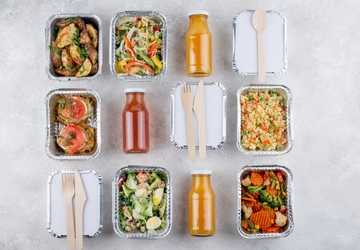
How to Navigate Dietary Restrictions While Traveling Top 10 Hacks
atika
When you travel to a new place you've never been and with a completely different culture, you pay more attention to what you eat. It can vary because you're allergic to something or don't eat a particular food group for religious reasons. Surprisingly, it's common these days in restaurants and cafes to be aware of this and be as inclusive as possible. Still, we have some tips and tricks to help you on your journey.
1. Know Your Dietary Restrictions
You need to be fully aware of your dietary restrictions, especially when traveling. Dietary restrictions set certain boundaries for knowing what foods you should and should not eat. Knowing can help you use exotic spices and maintain good health.
To set food restrictions, you'll need to list ingredients and foods that may trigger allergies, asthma, and other conditions that can be treated with medication right away, before it's too late.
2. Planning and Researching Travel Destinations
In order to successfully bypass dietary restrictions, you need to seek out local dishes that are available in the places you travel. Get immersed in finding kitchen prep ingredients. Each region has different traditions and spices that make their cuisine unique. Learn about the dish and how it is served. How is it prepared? So you can leave out spices that don't suit you.
3. Bring essential snacks and groceries

If you're going somewhere you've never been before, it's a good idea to pack travel snacks because you won't know what to eat, when, or if it's hygienic. If you're traveling cautiously, keep food and other snacks within limits. If you're planning a trip abroad, make sure you're packing nutrient-dense foods, or at least know where to find them. This way you can make sure you have enough snacks and food for a good ride.
4. Communication skills for dietary restrictions
Traveling abroad requires learning the basics of the language, especially idioms and words that will help you communicate with the locals. This gives you enough confidence to ask about your dietary restrictions. However, learning the language takes several months. So it is better to use translation app. All you have to do is understand the basic ingredients of dietary restrictions and how the locals call them, so you can easily get your desired food with custom ingredients.
5. Pocket Cards for Diets or Restrictions
Consult your nutritionist or doctor for a list of ingredients or foods to be wary of. Now translate them into the language of the country or region you are visiting. This may also include becoming vegetarian, vegan or only eating halal/kosher meat. If you eat out, you can share the menu with local hosts so they can serve you better.
6. Use a cold pack
No matter where you travel, whether it's a day trip or an entire weekend, reusable ice packs can come in handy. You can store food in the refrigerator overnight to keep it fresh longer and reuse it. Sandwiches are the easiest to make from your choice of ingredients, and these sandwiches will last you all day without spoiling.
7. Look for healthy options
No matter where you go, stores like 7/11 make it easy to find great-priced salads and sandwiches to keep you healthy. Most of the time, eating cooked food while traveling can cause problems because people are not used to the germs and microbes that are there. A healthy diet will help you avoid this. An easy tip here is to mix yogurt with granola or fruit slices for an easier, more affordable healthy meal.
8. Learn to read or translate nutrition labels

Most packaged foods you find while traveling have labels that list all ingredients and nutritional information. Be sure to read them to see what's available to you.
If the language is not spoken in your region, install a translator that can use OCR technology and translate images easily. Mostly Bing and Google Translate work, while some languages have their own well-established languages. By installing Baidu Chinese Translator app, you will get faster and better results.
9. Learn quick-prep recipes
We can all make simple sandwiches, but why not follow famous food or easy-to-make food channels and stories on Instagram? You have a variety of ways to combine different ingredients straight from the store shelf that are quick to prepare and taste healthy.
Most hotels allow you to use the kitchen or store groceries while traveling, while hotels have refrigerators to store ingredients. Cheese, lettuce, tomatoes, tuna, yogurt, and cornflakes are the basics when traveling for more than two days.
10. Keep your backpack full of safe stuff
You can cook treats like cookies or granola bars, or buy cookies, candy bars, muffins, and other treats at the market. Keep them with you on your sightseeing excursions and provide you with food when you're hungry and can't find a good place to eat. You'll find many high-energy foods on the market that don't take up space and are perfect for eating on the go while still finding a good place to eat.
Eat Healthy - Eat Safe
The biggest draw of traveling is getting to know new places, people, food and more. Eating different regional cuisines has its own advantages and experiential value, but you cannot ignore your own limitations and allergies just for the taste and fun. Read on for tips on mastering delicious meals on the go while maintaining healthy nutrition.




